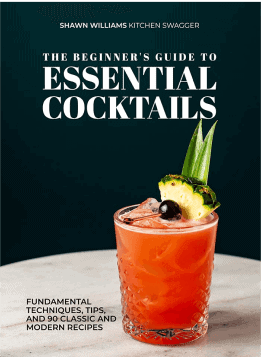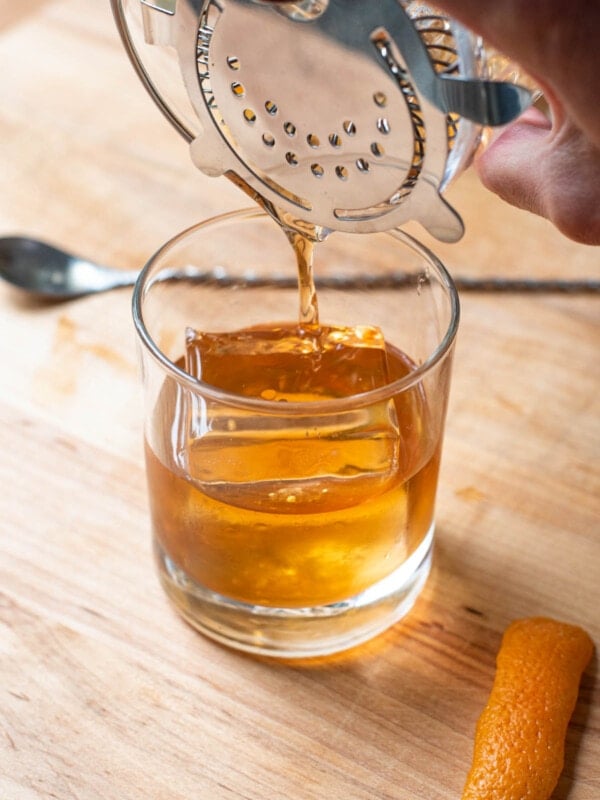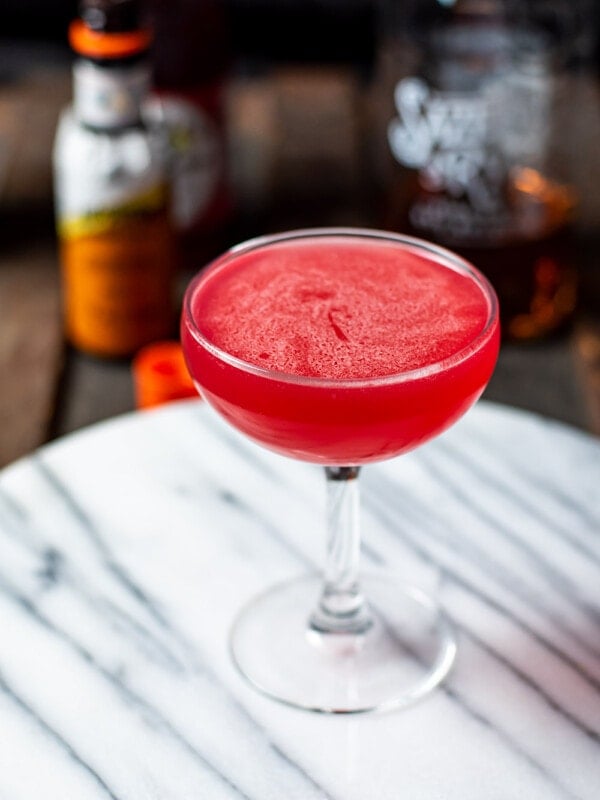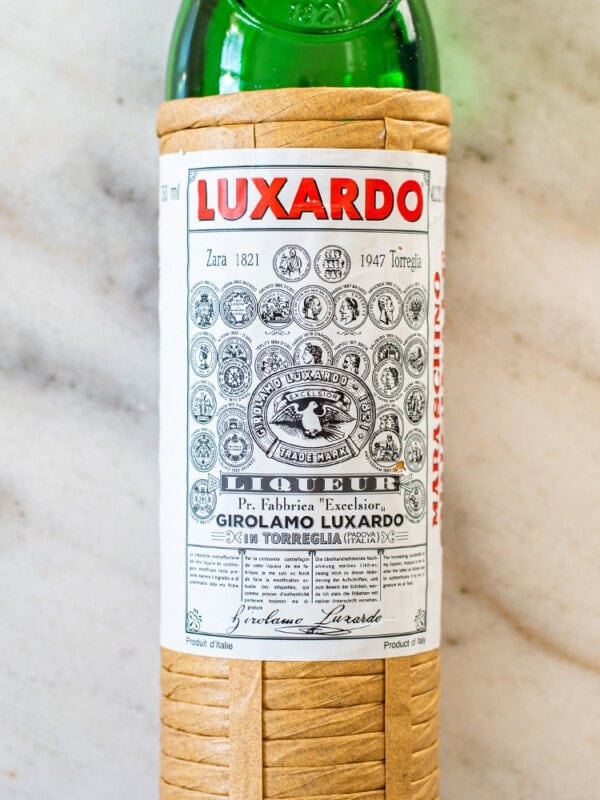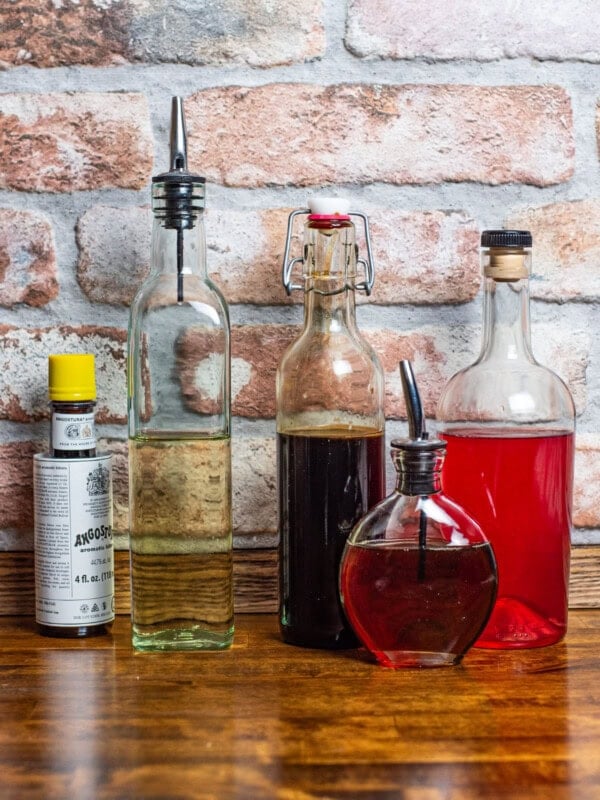Essential Bar Tools and Cocktail Tips
Oct 23, 2024
This post may contain affiliate links. Please read our disclosure policy.
Making great cocktails comes down to the right techniques, quality ingredients, and proper measurements. You don’t need to spend a lot of money on equipment and you don’t need top-shelf spirits. Here are my must-have bar tools and game-changing tips I’ve learned along the way.
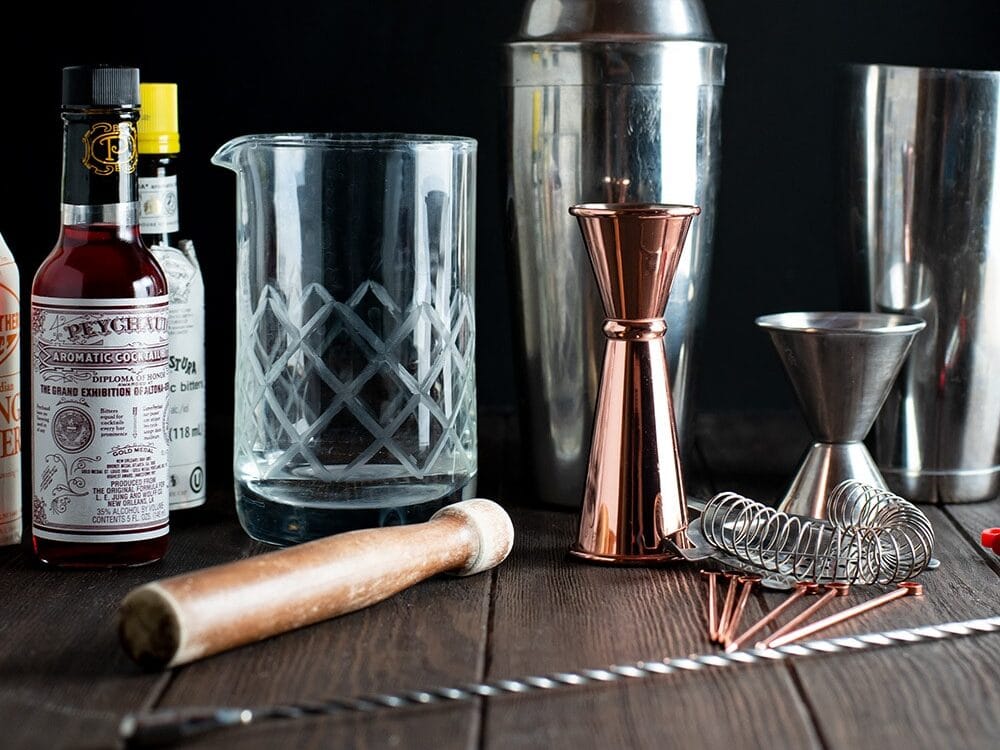
Table of Contents
Basic Bar Tools
Boston Shaker
One of the most popular and trusted cocktail shakers is the Boston shaker. It consists of two metal cups and usually comes with a strainer. I recommend one without glass (two metal canisters). Glass risks shattering and is more difficult to separate once tightly sealed.
Hawthorn Strainer
A Hawthorn strainer is a flat, perforated metal disc with a handle, surrounded by a coiled wire or spring that fits over the mouth of a shaker or mixing glass. The perforations allow liquid to pass through while trapping larger solids.
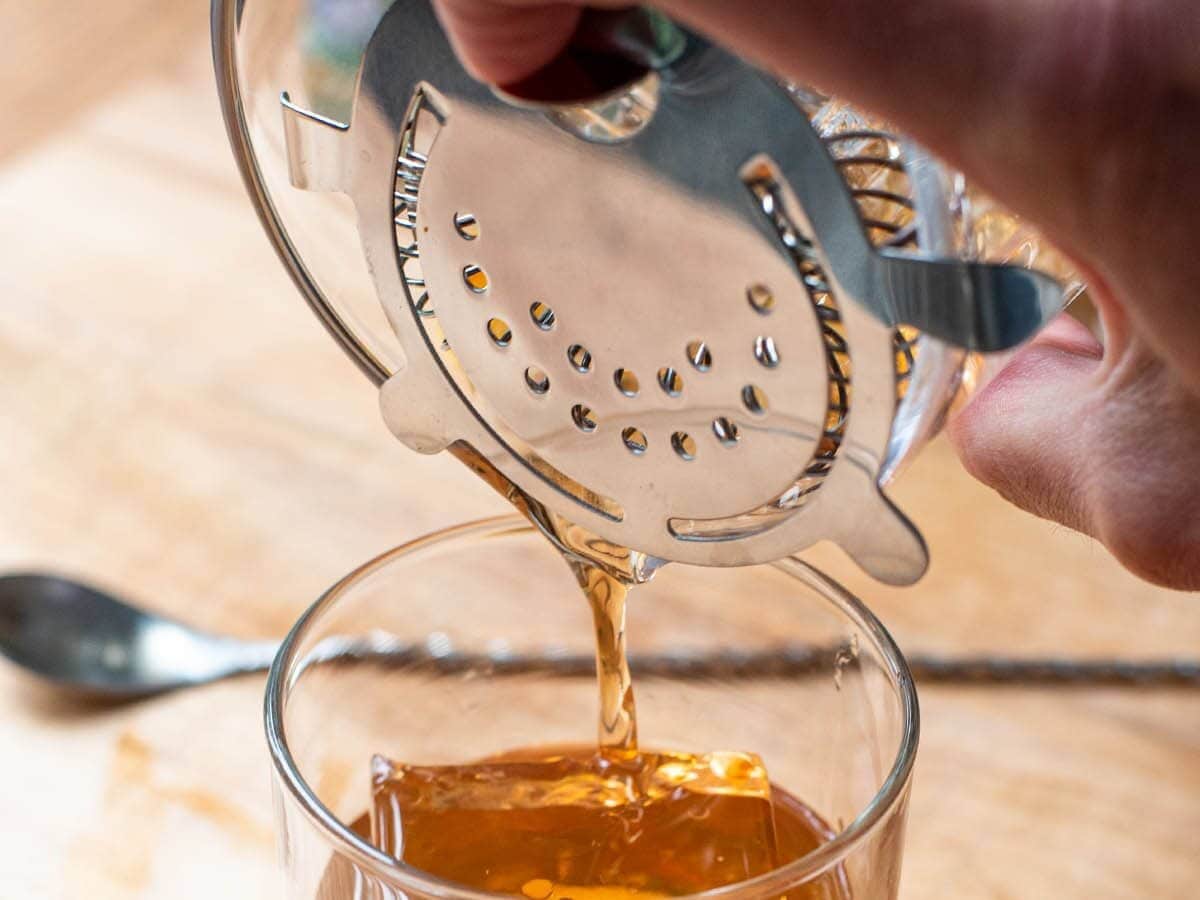
Double Jigger
A standard jigger consists of two measuring sides. The larger side is 2 ounces and the smaller side is 1 ounce. As a bonus, look for a jigger with incremental markers for ½, ¾, and 1½ ounces. Just to note, a jigger should always be filled to the very top for a full 1 or 2-ounce measurement. If you can find a jigger with ¼ ounce markings, that’s even better. Don’t settle for a “shot glass” because they’re typically 1½ ounces and difficult to eyeball.
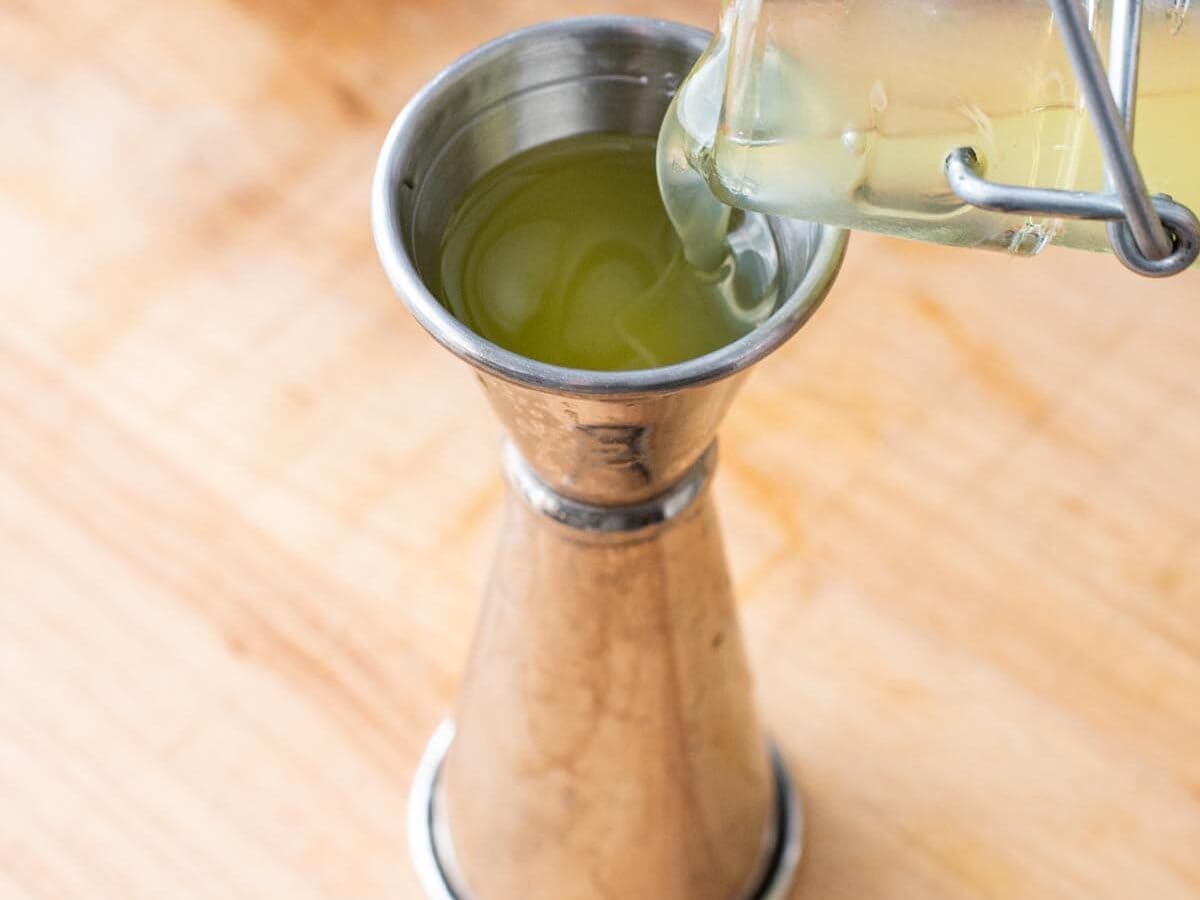
Extra Bar Tools
Mixing Glass
A mixing glass is a glass cylinder with a spout for easy pouring. These are best used for stirred cocktails. Glass is a better insulator than metal, meaning it chills cocktails quicker, allowing superior dilution control. I recommend a mixing glass if you’re serious about making cocktails.
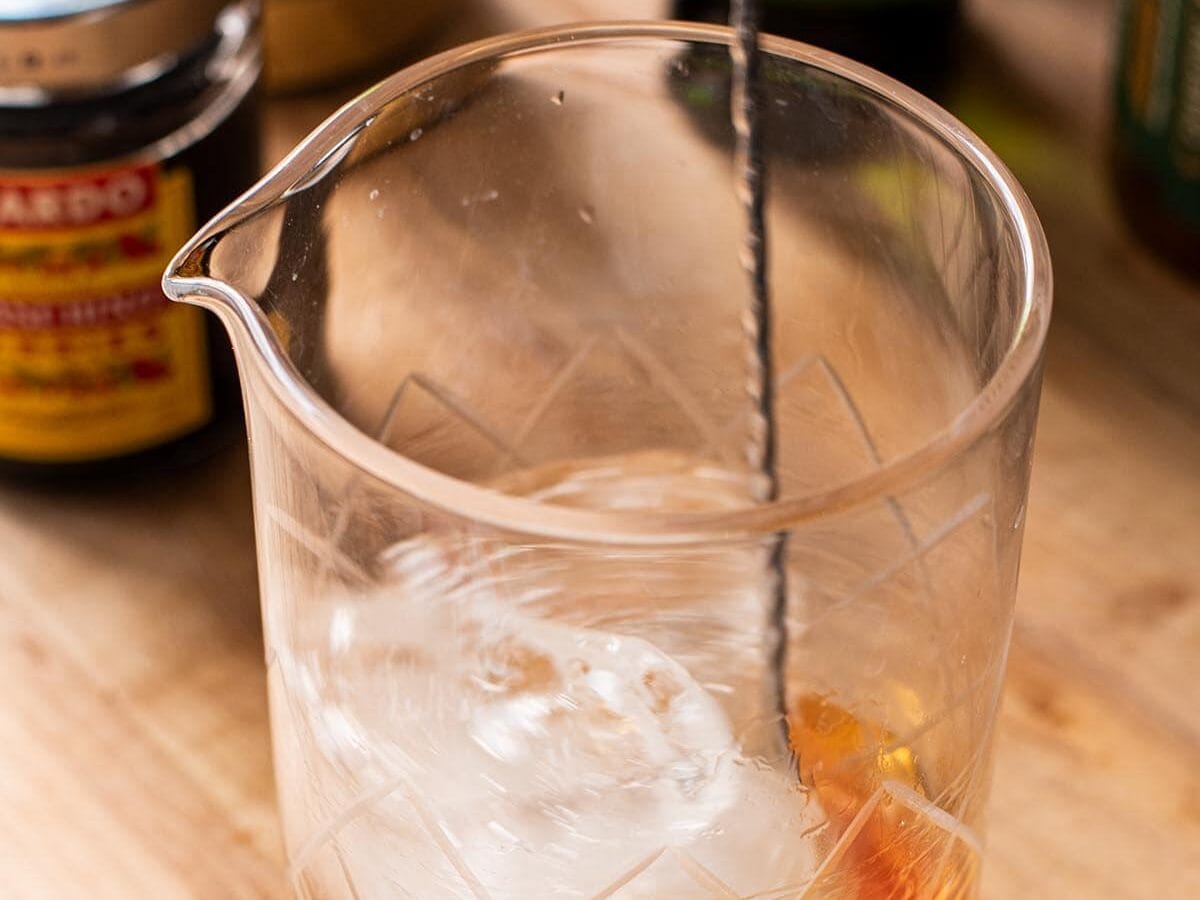
Fine Mesh Strainer
A fine mesh strainer removes fine particles, herbs, or citrus pulp from a finished cocktail, improving appearance and texture. Shaken cocktails also produce tiny ice shards that will dilute your cocktail as you sip. A shaken cocktail ‘served up,’ will always benefit from double-straining through a fine mesh strainer.
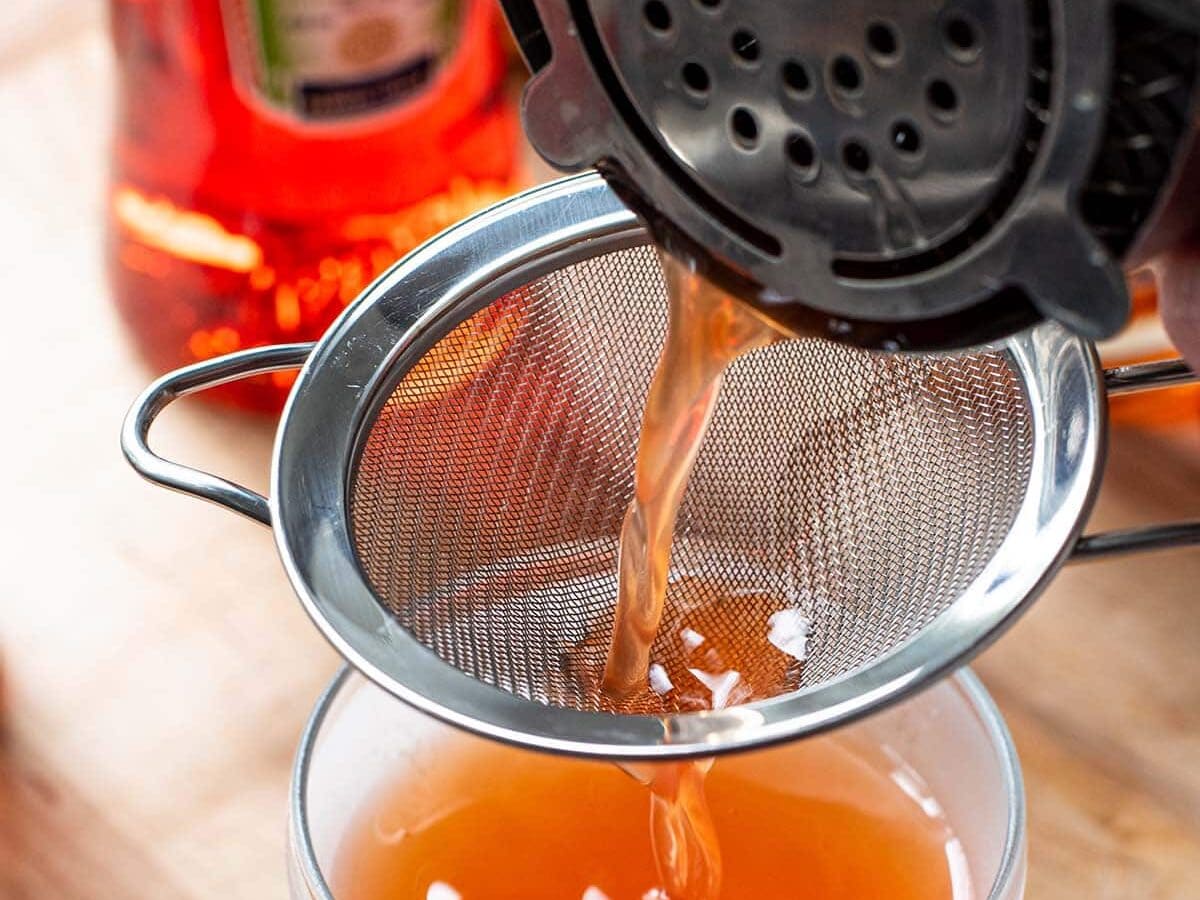
Bar Spoon
Bar spoons are long cocktail stirrers that make stirring cocktails almost effortless. Look for one 12+ inches long for easy handling. These are occasionally used for measuring small ingredients like simple syrup.
Citrus Squeezer
A handheld citrus squeezer makes for easy lemon and lime juicing. While bottled shortcuts are convenient, fresh citrus makes a huge difference in terms of freshness and authentic flavor. Look for a stainless steel citrus squeezer because painted ones will eventually peel and chip. Note: the cut side of the lemon/lime should always face down when using. For oranges and grapefruits, opt for a large citrus juicer.

Muddler
A muddler is designed for smashing fruit and herbs. It’s especially useful in Mojitos. I prefer a metal muddler for easy cleaning. Longer muddlers are easier to use in deep shakers.
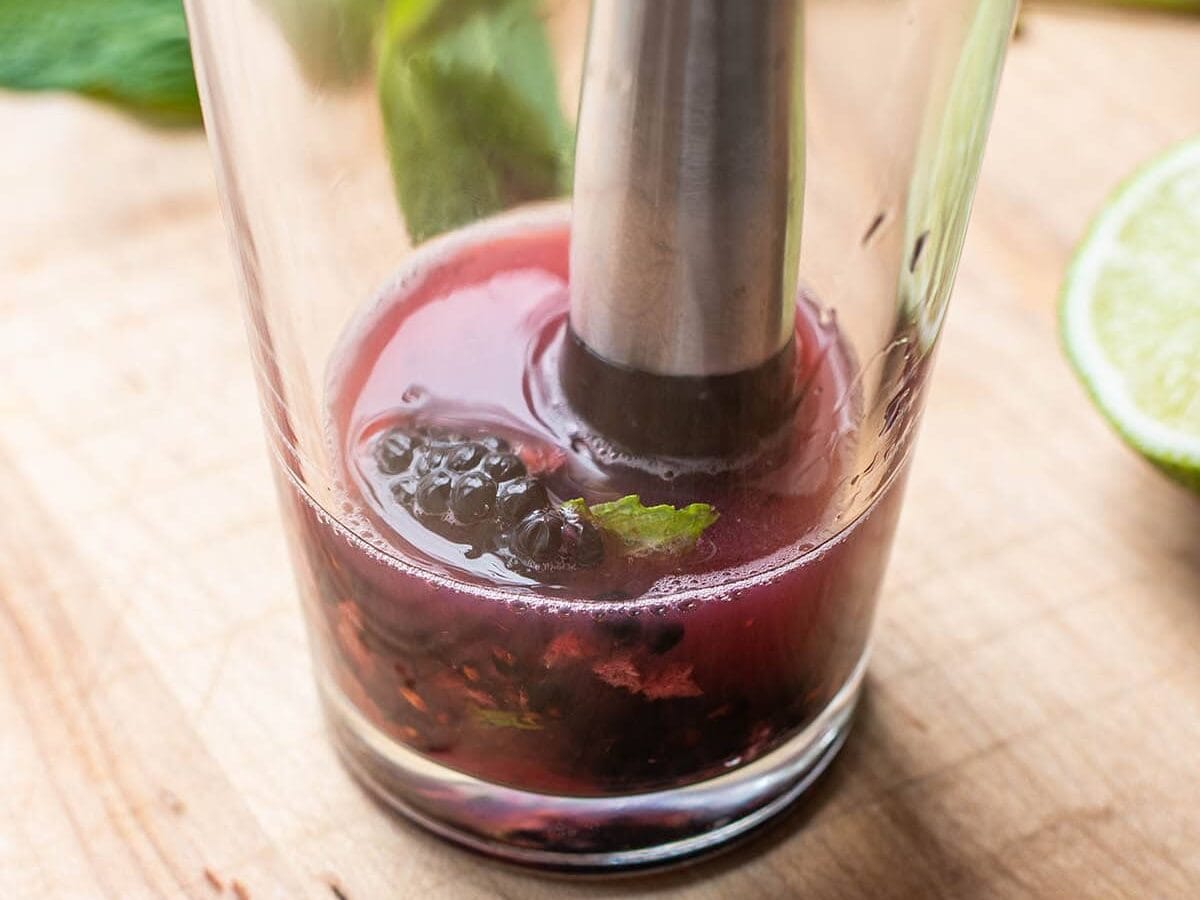
Y-Shaped Peeler
A Y-peeler is great for making citrus peels for garnishes and expressing over drinks. An even safer option is a handheld cheese slicer. Take care not to cut too deeply into the pith (the spongy white lining) because it can make the peel more difficult to work with. Citrus oils add an intense aroma to cocktails. Squeeze the edges of the peel so the oils release. When done properly, you can see the oils floating on the surface of the drink.
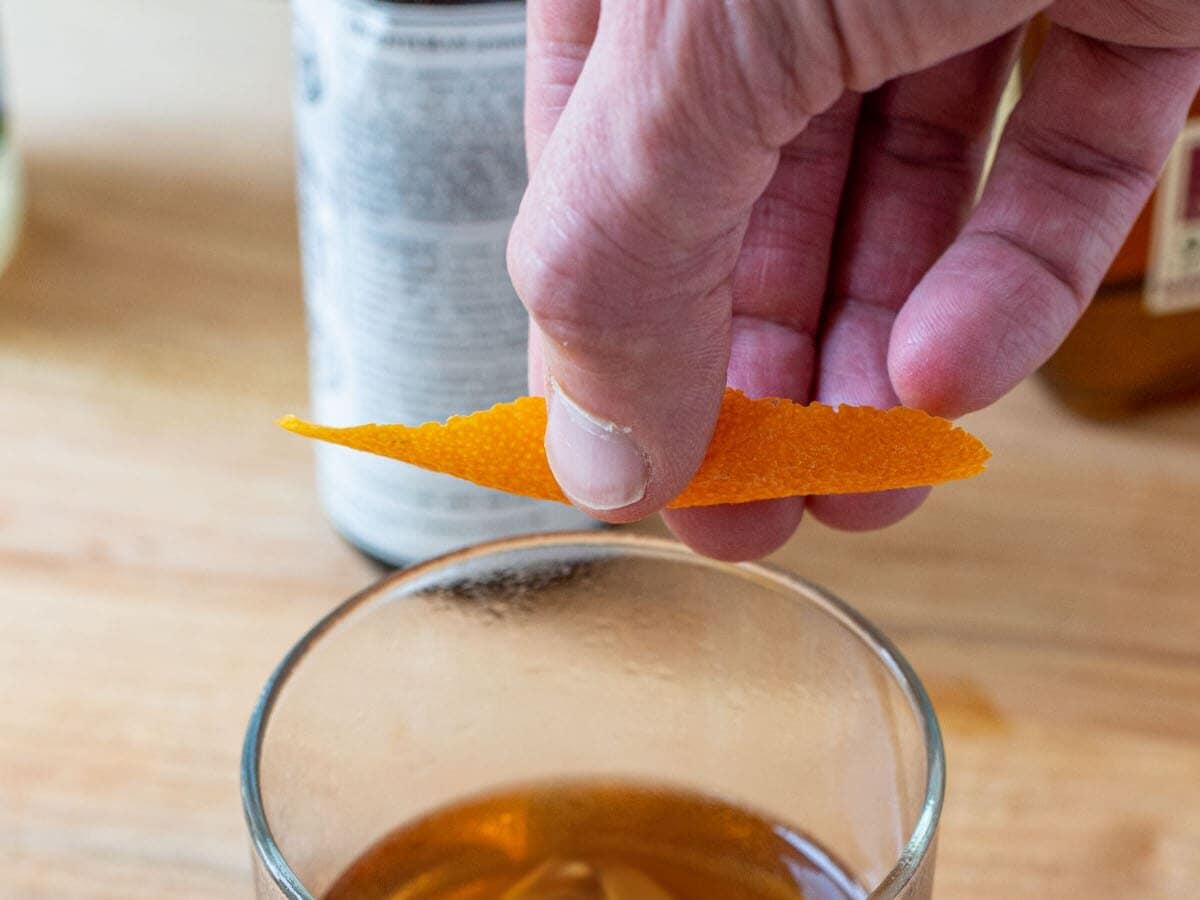
Mallet and Lewis Bag
A mallet and Lewis bag can easily turn cubed ice into crushed ice. Fill a canvas bag with cubed ice and hit it with the mallet. It’s useful for the Mai Tai and other tiki cocktails.
Large Cube Clear Ice Tray
Crystal clear ice has no taste and melts slower since it’s free of impurities. Clear ice prevents excess dilution and off-flavors. There are several large 2″x2″ clear ice trays available in the $20-$30 price point that work great. I use a 10-cube tray that I love. Clear ice is one of the single biggest improvements you can make in your cocktails. I reserve clear ice for serving only. Bagged ice is my favorite option for parties because it’s purer than what comes out of my freezer’s ice maker.
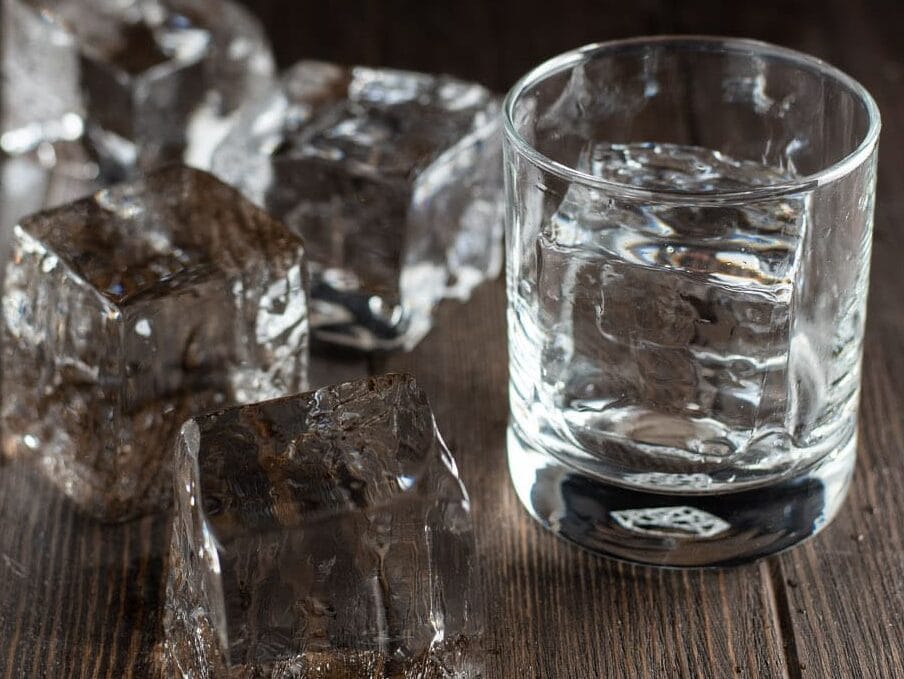
Useful Tips
Shaking Versus Stirring Cocktails
As a general rule, stir a cocktail containing all clear spirits and shake a cocktail containing fresh citrus, egg, cream, or opaque ingredients. Some cocktails come down to preference, such as a shaken Martini, even though it technically “breaks the rules.” I typically use a solid cup full of ice when mixing drinks.
More ice equals rapid chilling with less dilution, which is better if your ice is lower quality. If you’re serving over ice, it’s important not to over-shake/ stir because the drink will continue to dilute in the glass. I recommend a 7-10 second shake or 12 rapid stirs as a ballpark.
Batching Cocktails
If you’re hosting and want to reduce chaos, consider batching cocktails ahead. Combine ingredients in a sealable glass container and dilute with roughly 1 ounce of filtered water per 24 ounces of cocktail. Place in the freezer and pour directly over ice when ready to serve. This works best with spirit-forward, stirred cocktails such as Manhattans or Old-Fashioneds. Margaritas are borderline as the heavy citrus will start to freeze. Make citrus cocktails 1-2 hours in advance or keep it in the fridge to be safe.
Glassware
Every recipe displays the recommended glassware for each cocktail. If you’re just starting out, grab a few coupe glasses (compact and convenient), old-fashioned glasses, and some highballs. Chill your glasses in the freezer before serving! This prevents instant warming and keeps drinks colder. I always keep 3-4 glasses in the freezer for this purpose.
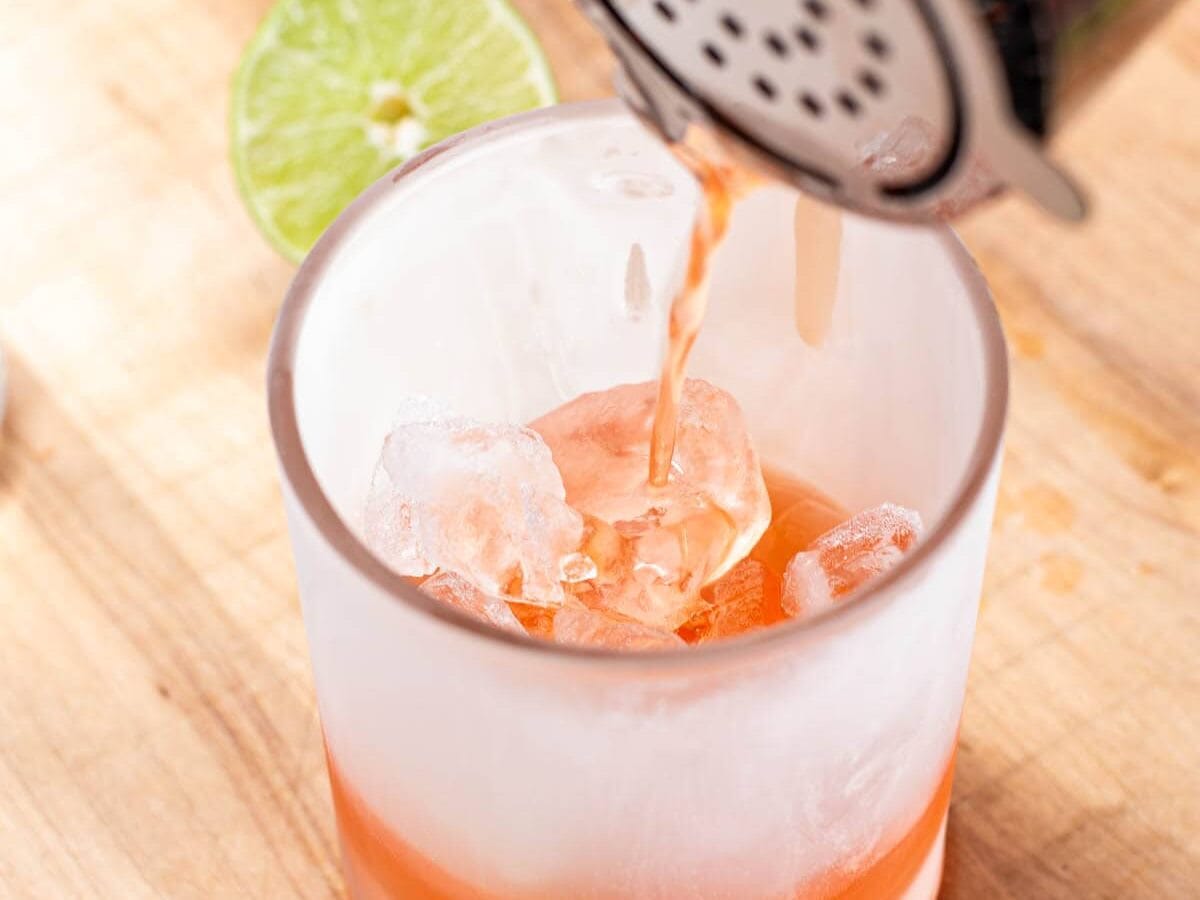
Absinthe Rinse
A handful of classics, such as the Sazerac call for an absinthe rinse, which adds subtle anise flavor and aroma. This consists of lightly coating a serving glass with absinthe and discarding the excess. I use a mini food-grade spray bottle and spray the inside of the glass. This reduces waste and saves time. Absinthe is optional and won’t make or break your drink.
Demerara Syrup Versus Simple Syrup
Simple syrup is a sweetener made with equal parts granulated table sugar and water. Ideally, this should be measured by weight via scale, but you can get a close estimate by volume with a measuring cup. Read more about making cocktail syrups.
Demerara syrup is a simple syrup made with demerara sugar, a less processed sugar. Demerara lends more caramel/molasses flavor. Demerara is typically made rich, meaning it uses a 2:1 ratio of sugar to water, rendering slightly more viscous cocktails. As a guide, use demerara syrup with dark spirits (whiskey/rum) and simple syrup with light spirits (gin, tequila, vodka). This is still a matter of preference and not a hard rule.
